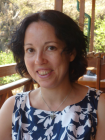A. (Anastasia) Borschevsky, Prof

Research interests
In my work I apply state-of-the-art computational chemistry methods to address fundamental problems in physics. I carry out very accurate calculations of electronic structure and properties of heavy and unstable atoms and molecules and highly charged ions. These calculations are used to support the challenging spectroscopic experiments and precision measurements that search for signatures of physics beyond the Standard Model. Our method of choice is the relativistic coupled cluster, which is considered to be one of the most powerfull methods for treating heavy many-electron systems.
Most of the work in my group is done in collaboration with local and foreign experimental groups who use our predictions to plan and interpret their experiments. For example, I am a member of the NL-eEDM collaboration (NWO XL grant), the aim of which is to measure the P,T-violating electric dipole moment of the electron in a beam of cold and slow BaF molecules.
